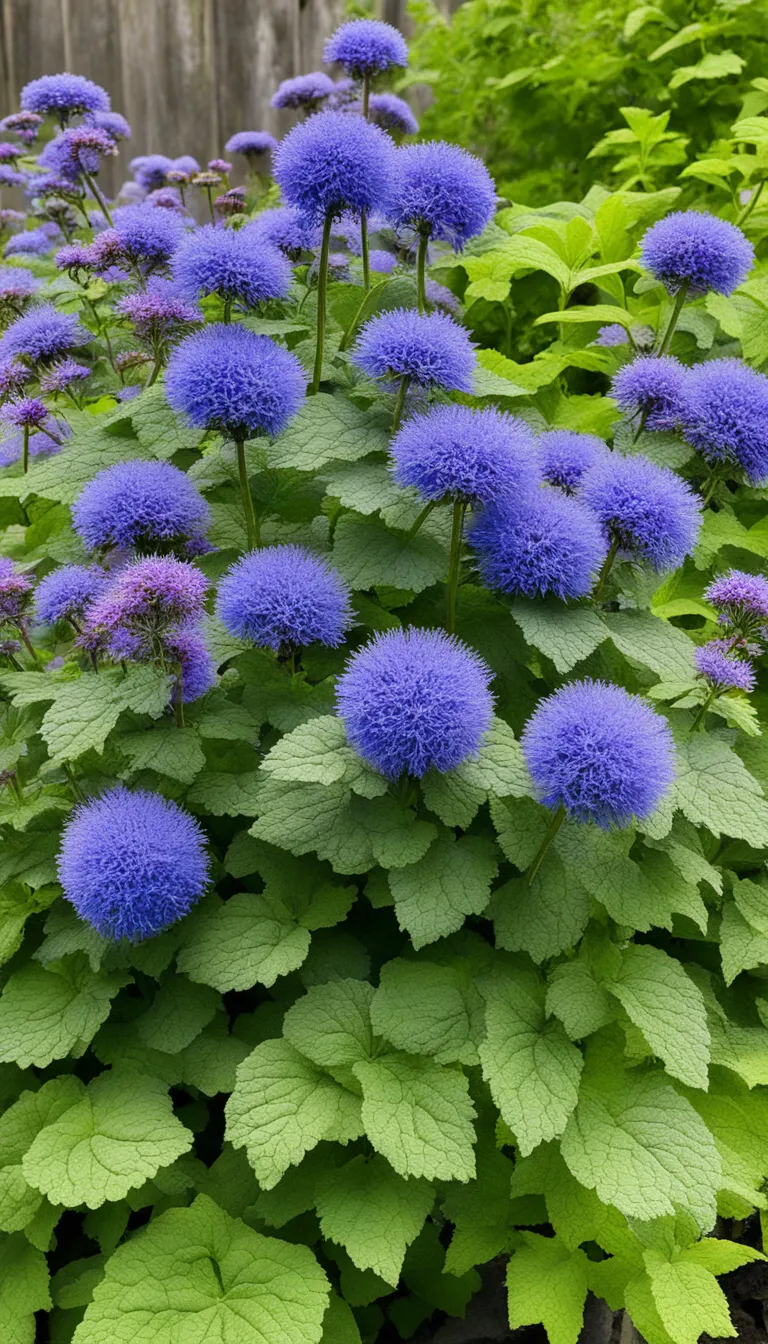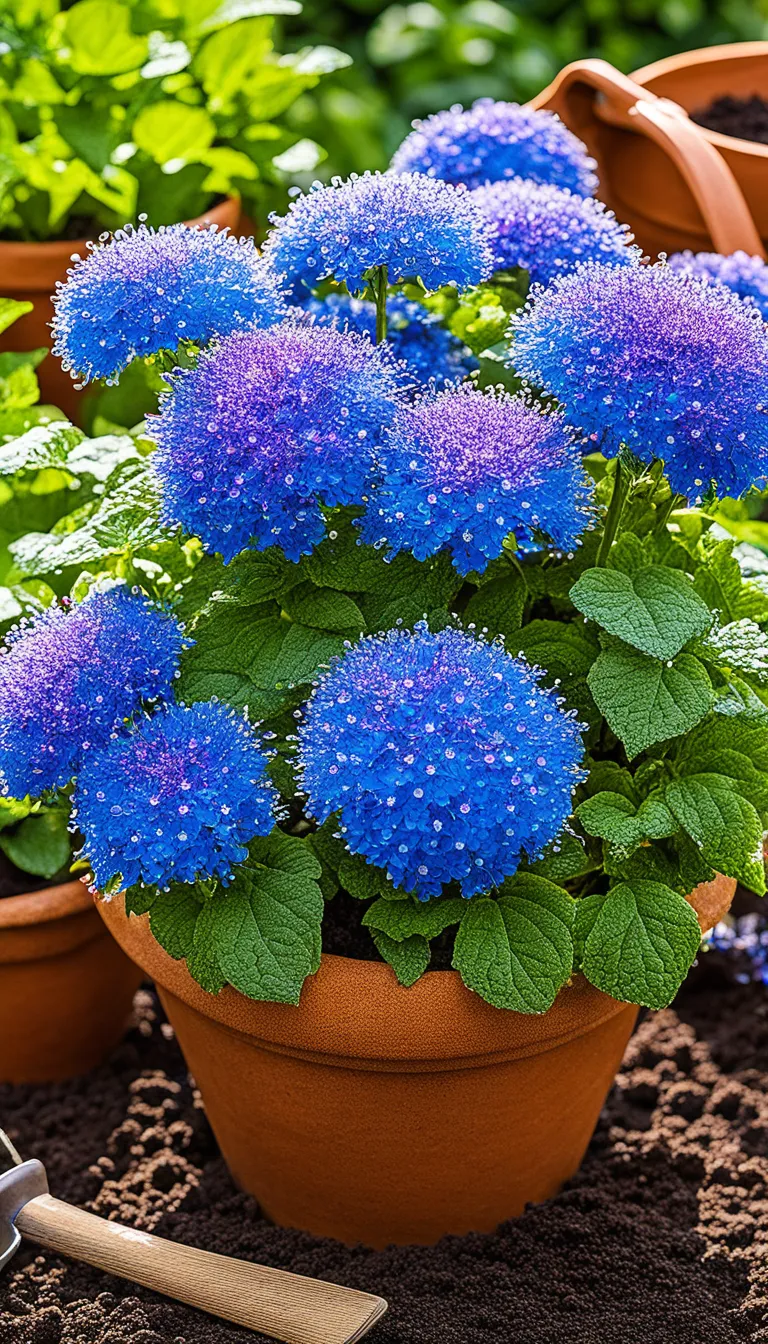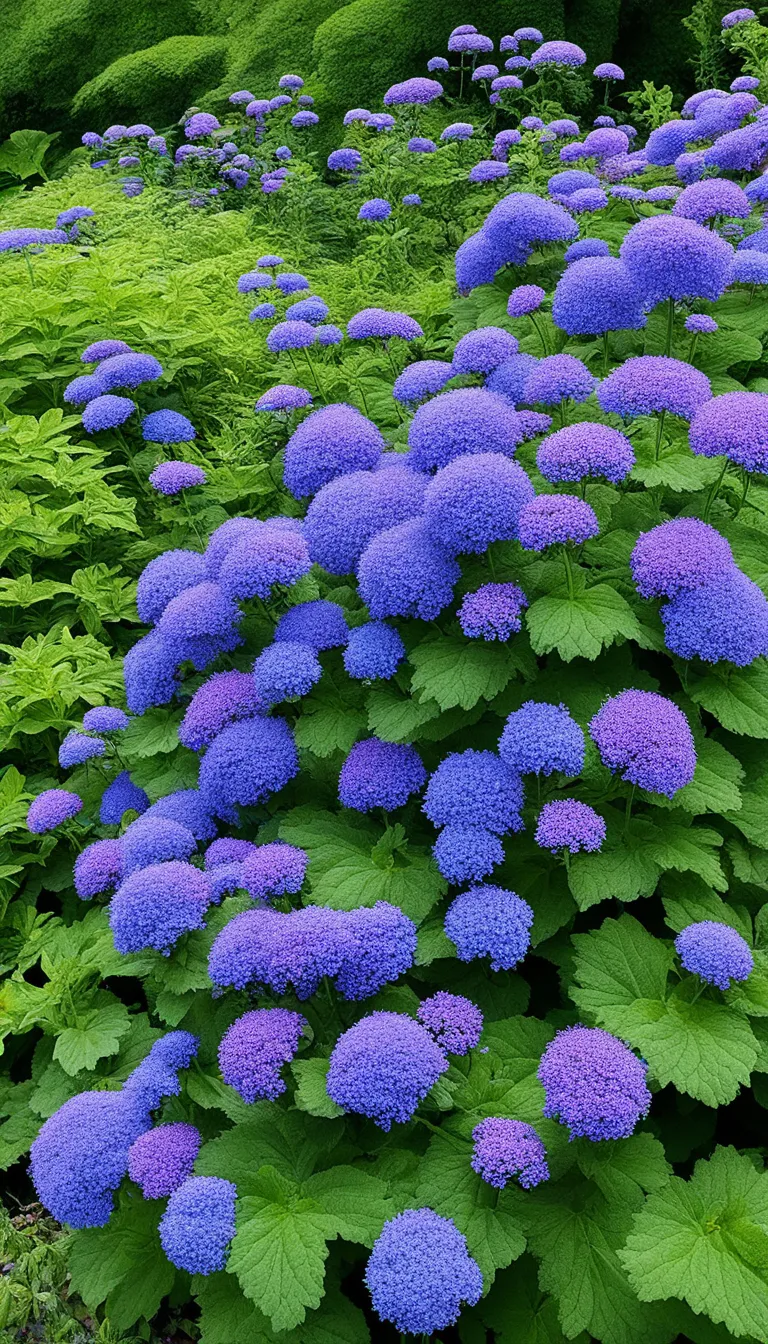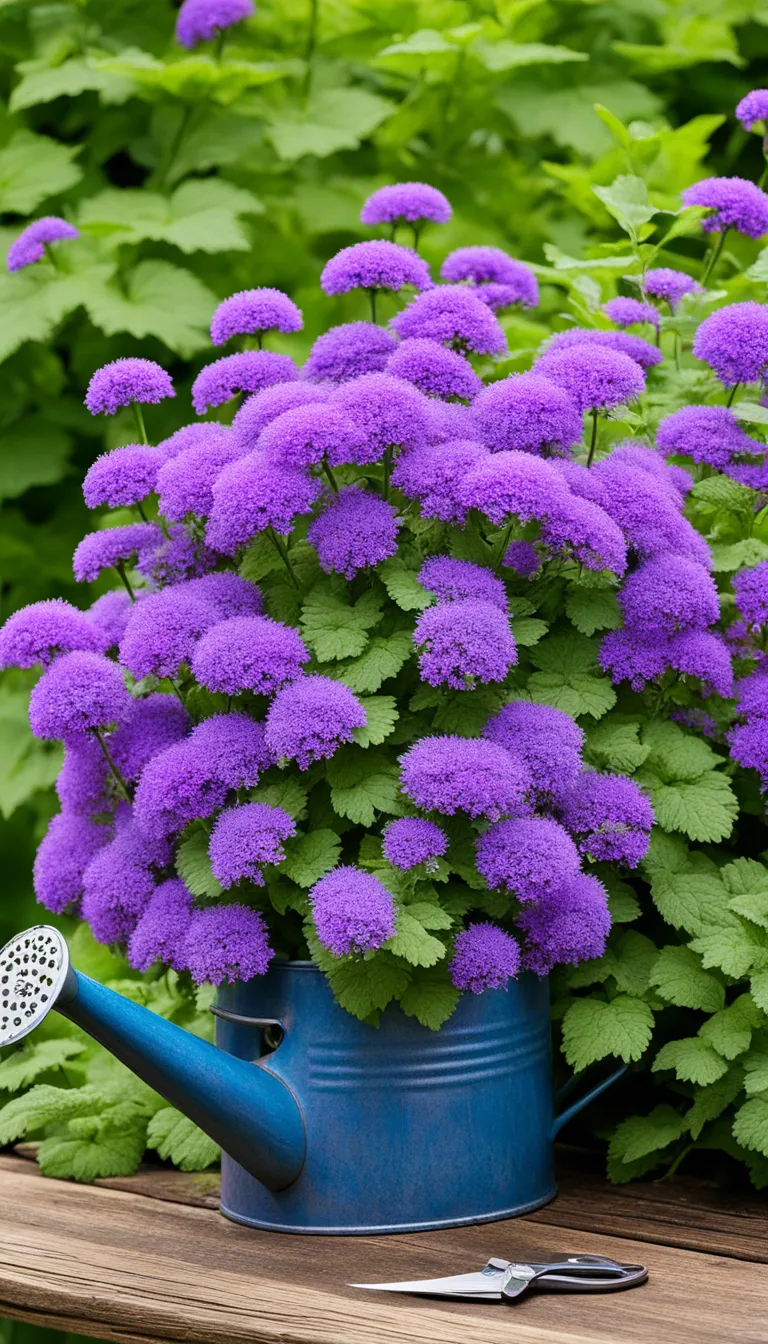Discover the charm of Ageratum, a popular bedding plant known for its fluffy flowers and easy maintenance. The Ageratum, with its unique texture and vibrant hues, is a staple in gardens and landscapes, offering a touch of whimsy and color that can surprise and delight any plant enthusiast. These petite blooms pack a visual punch, creating an explosion of color that can make any garden space feel like a lively celebration of nature.
Often found in borders or as part of a mixed container, Ageratum’s ability to attract butterflies and pollinators is not only beneficial for the environment but also adds an interactive element to your garden. The soft, fuzzy appearance of its flowers gives it a distinctive look, which can easily be integrated into various garden designs. Whether you’re looking to create a serene blue theme or a vibrant, multi-colored display, Ageratum’s versatility is unmatched.
Moreover, Ageratum is not just a pretty face; it’s renowned for its easy-going nature and resilience. Gardeners love this plant for its ability to thrive with minimal fuss. Its low maintenance requirements make it a fantastic choice for both novice and experienced gardeners alike. If you’re seeking to add a burst of color and texture to your outdoor space, Ageratum is a choice that will not disappoint.

What is Ageratum?
Ageratum, also known as floss flower, is a charming addition to any garden, bringing a touch of softness and color with its distinctive fuzzy flowers. This delightful plant hails from the warmer climes of Central America and the Caribbean, but has since captured the hearts of gardeners across the globe. So, what makes Ageratum a garden favorite? Let’s dive in!
First off, Ageratum is celebrated for its long blooming period. These beauties often flower from late spring until the first frost, offering a consistent splash of color when many other plants have said their goodbyes. But it’s not just about longevity; Ageratum’s flowers are also known for their unique texture. Each bloom is a cluster of tiny, thread-like petals that create a fuzzy appearance—almost like a soft, colorful cloud resting atop its foliage.
Moreover, Ageratum’s popularity is boosted by its versatility. Whether you’re crafting a cottage garden or aiming for a more formal landscape, Ageratum fits right in. It’s also a pollinator magnet, attracting butterflies and bees that bring life and movement to your garden. And let’s not forget its stature! Typically, Ageratum plants are compact, usually growing between 6 to 24 inches tall, making them perfect for borders, containers, or as a vibrant ground cover.
But wait, there’s more! Here’s a quick rundown of Ageratum’s key features:
- Origin: Central America and the Caribbean
- Blooming Period: Late spring to the first frost
- Height: 6 to 24 inches
- Colors: Shades of blue, purple, pink, and white
- Attracts: Butterflies and bees
- Uses: Borders, containers, and ground cover
In essence, Ageratum is a low-maintenance, high-impact plant that can add a burst of color and texture to your garden with minimal fuss. Its fluffy flowers, lasting presence, and friendly demeanor towards pollinators make it a top pick for both novice and experienced gardeners alike. Are you ready to get cozy with these fuzzy blooms?

How to Care for Ageratum?
Ever wondered how to keep those lovely Ageratum flowers blooming like a firework display in your garden? It’s simpler than you think! First things first, let’s talk about watering. Ageratum plants enjoy a drink, but they don’t like to swim. To ensure you’re not overdoing it, wait until the top inch of soil is dry before giving them a good soak. Remember, consistency is key to prevent wilting or, on the flip side, root rot.
Now, let’s shine some light on sunlight requirements. These fuzzy beauties adore the sun, bathing in its rays for at least 6 hours a day. However, if you’re in a particularly hot climate, a bit of afternoon shade won’t hurt to protect them from a sunburn. Place them in a spot where they can soak up that morning sunshine and enjoy a bit of respite when the sun’s at its peak.
Soil is the foundation of any plant’s life, and Ageratum is no exception. They thrive in well-draining soil with a pH level of 6.0 to 7.5. If you’re unsure about your soil’s pH, a simple test can save the day. Ageratum’s roots are like Goldilocks, they prefer it just right—not too acidic, not too alkaline.
- Water when the top inch of soil feels dry to the touch
- Provide at least 6 hours of sunlight daily, with some afternoon shade in hot climates
- Use well-draining soil with a pH of 6.0 to 7.5
Stick to these tips, and you’ll be rewarded with an explosion of color that’ll make your neighbors’ jaws drop. Isn’t it surprising how a little TLC can transform your garden? Go ahead, give your Ageratum the care it deserves and watch it flourish!

What are the Ageratum Varieties?
When it comes to adding a touch of whimsy to your garden, the various Ageratum species are like the cherry on top of a sundae. But did you know there’s a whole spectrum of Ageratum varieties to choose from? Let’s dive into the colorful world of these fuzzy beauties.
Ageratum houstonianum, commonly known as Flossflower, is the star of the show with its classic lavender-blue blooms. It’s the one you’ve probably seen adding a cool contrast in a sea of greenery. But hold onto your garden gloves, because the Ageratum family has more shades than your favorite artist’s palette!
- ‘Blue Mink’: Picture a soft, powdery blue that looks like it’s been borrowed from a serene sky at dawn. That’s ‘Blue Mink’ for you.
- ‘Red Sea’: Ready for a surprise? ‘Red Sea’ brings an unexpected pop of pinkish-red to the mix, proving Ageratum can do more than just “blue.”
- ‘White Bouquet’: For those who prefer a classic touch, ‘White Bouquet’ offers a crisp, clean white that’s as fresh as a spring breeze.
Choosing the right Ageratum means considering the mood and color scheme of your garden. Are you looking for an explosion of color or a subtle complement to your existing flora? Whichever variety you pick, you’re sure to create a sensation in your outdoor space. So, why not mix and match to create your own unique garden tapestry?





